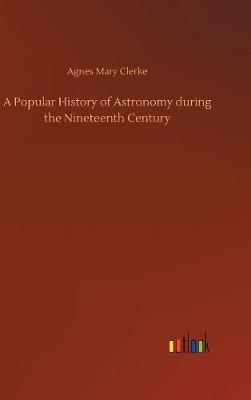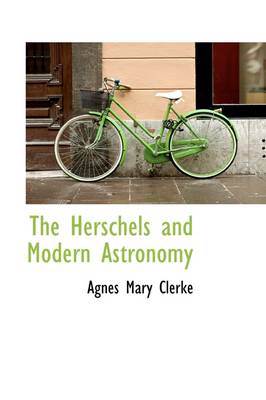Cambridge Library Collection - Astronomy
4 total works
A Popular History of Astronomy during the Nineteenth Century
by Agnes Mary Clerke
Published 5 January 2010
Agnes Mary Clerke (1842-1907) first published A Popular History of Astronomy in 1885. The work was received with widespread acclaim and brought Clerke an international reputation as a science writer. The History surveys the progress made in the field of astronomy during the nineteenth century. It is split chronologically into two parts, dealing with the first and the second half of the century. Part 1 focuses on the career of the astronomer William Herschel (1738-1822) and the development of sidereal astronomy; part 2 deals with the discovery of spectrum analysis and the progress of knowledge about sun spots and the magnetic disturbances which cause them. Clerke's work, a classic example of Victorian popular scientific literature, stands alongside Grant's earlier History of Astronomy in its success in popularising the subject. The work is important today for scholars researching the history of the discipline and its place in educated Victorian society.
The Herschels in this biography are Sir William Herschel (1738-1822), his sister Caroline (1750-1848) and Sir John Herschel (1792-1871), William's son. Sir William was an astronomer and telescope-maker who discovered the planet Uranus in 1781. He was appointed 'the King's astronomer' to George III in 1782, and under his patronage built the then largest telescope in the world. Caroline Herschel worked as her brother's assistant for much of his career but was also an accomplished astronomer in her own right, discovering eight comets and producing a catalogue of nebulae. Her nephew Sir John Herschel was also a distinguished astronomer who made many observations of stars in the southern hemisphere. This book by the astronomer and writer Agnes Clerke (1842-1907), published in 1895, provides both an analysis of their work and an assessment of its contribution to later astronomical research.
Agnes Mary Clerke (1842–1907) published The System of the Stars in 1890 when she was a well-established popular science writer. The volume was intended to bring the educated public up to date with the progress made during the nineteenth century in the field of sidereal astronomy. The work was one of the first publications to be illustrated with astrophotography: it contains five astronomical photographs of nebulae. Such photographs had significant impact on the reception and popular acceptance of astrophotography as scientific data. In The System of the Stars, Clerke used the photographs to argue that the natural beauty and symmetry of the universe, displayed by astrophotography, proved the existence of a creator. The work is an important piece of popular Victorian scientific literature, and remains significant today in the context of the nineteenth-century intellectual debates on the relationship between the sciences and religious belief.
The Concise Knowledge Astronomy
by Agnes Mary Clerke, Alfred Fowler, and John Ellard Gore
Published 20 January 2011
The Concise Knowledge Astronomy, published in 1898, was one of a series of popular reference books by experts. Agnes Clerke (1842–1907) was a successful author of books on astronomy and its history (three of her other works being reissued in this series), and her co-authors were astrophysicist Alfred Fowler, an internationally renowned expert in spectroscopy, and J. Elland Gore, a Fellow of the Royal Astronomical Society and expert on variable stars. Illustrated by over 100 photographs and drawings, the book aims to provide the educated non-specialist reader with an understanding of current astronomical knowledge. The application of new technologies, such as photography and spectroscopy, to astronomy in the nineteenth century had led to many new discoveries, and public interest in the subject had greatly increased. The book is divided into four parts - the history of astronomy, astronomical movements and instruments, the solar system, and sidereal astronomy.


